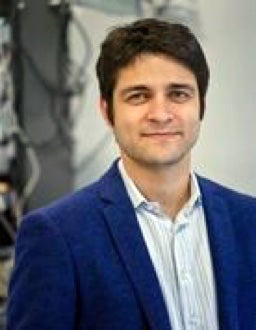The study of biological function in intact organisms and the development of targeted cellular therapeutics necessitate methods to image and control cellular function in vivo. Technologies such as fluorescent proteins and optogenetics serve this purpose in small, translucent specimens, but are limited by the poor penetration of light into deeper tissues. In contrast, most non‐invasive techniques such as ultrasound and magnetic resonance imaging – while based on energy forms that penetrate tissue effectively – are not effectively coupled to cellular function. Our work attempts to bridge this gap by engineering biomolecules with the appropriate physical properties to interact with magnetic fields and sound waves. In this talk, I will describe our recent development of biomolecular reporters and actuators for ultrasound. The reporters are based on a unique class of gas‐filled protein nanostructures from buoyant photosynthetic microbes. These proteins produce nonlinear scattering of sound waves, enabling their detection with ultrasound. I will describe our recent progress in understanding the biophysical and acoustic properties of these biomolecules, engineering their mechanics and targeting at the genetic level, developing methods to enhance their detection in vivo and expressing them heterologously as acoustic reporter genes. Our actuators are based on temperature‐dependent transcriptional repressors, which provide switch‐like control of bacterial gene expression in response to small changes in temperature. We have genetically tuned these repressors to activate at thresholds within the biomedically relevant range of 32oC to 46oC, and constructed genetic logic circuits to connect thermal signals to various cellular functions. This allows us to use focused ultrasound to remote‐control engineered bacteria in vivo
The Van Ness Award is made in recognition of the achievements of the late H.C. Van Ness, Institute Professor Emeritus at Rensselaer Polytechnic Institute. It is presented annually to honor a chemical engineer who has made seminal contributions to the profession. The Van Ness Award Lecture Series is sponsored by a generous endowment from Edward ’62 and Nancy Feltham.

The Shapiro group develops molecular technologies for noninvasive imaging and control of cellular function, and uses these technologies to study basic biology and create cellular diagnostics and therapeutics.
Many important biological processes occur deep inside living organisms. Their study requires technologies to image and manipulate cellular and molecular function non-invasively. To develop such technologies, we pursue fundamental advances at the interface of molecular and cellular engineering with various forms of energy: magnetic, mechanical, thermal and chemical. Our work takes advantage of naturally evolved biological structures with unique physical properties, which we use as starting points for engineering.
Our key biophysical methods include magnetic resonance and ultrasound, and our primary biological interests are in neuroscience, microbiology and immunology.

